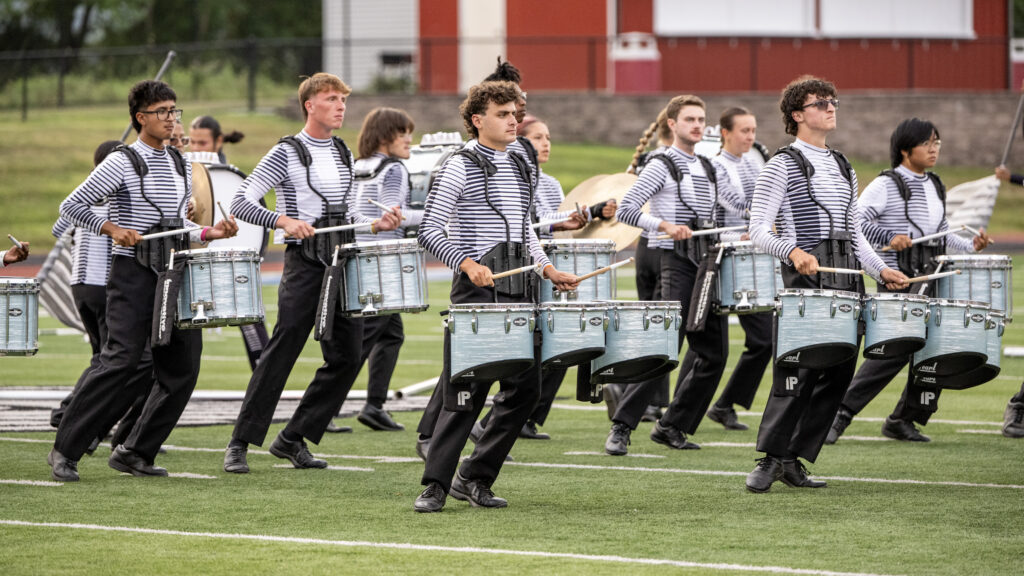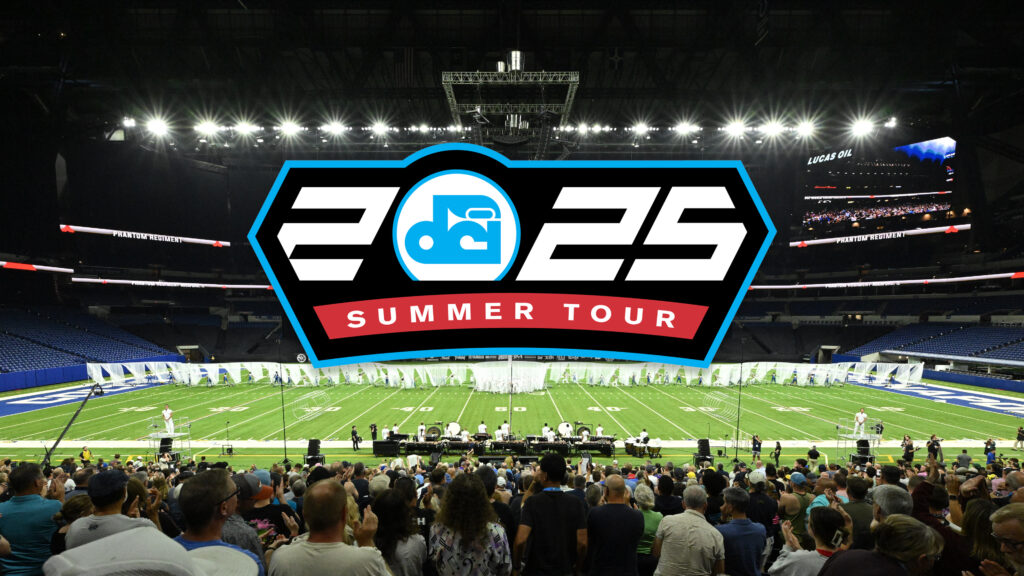Dr. Dave Knowlton contributed the following story on the power of drum corps to change the lives of those in the stands. This follows up on a Fanfare article from Feb. 17, 2006, “Remembering Jim Ott.” On a hot July day in 1980, some friends asked me if I wanted to go to the Blues in the Night drum and bugle corps show in Memphis. I asked, “What’s drum and bugle corps?” While their description didn’t sound quite as entertaining as the previews that I had seen for that night’s episode of “The Dukes of Hazzard,” I decided to go along. I sat between my friend Ricky and his dad. I had my popcorn and a hot dog. Early in the show, I was entertained. There were lots of loud drummers drumming and cute girls twirling flags and throwing rifles. I’m sure that I probably called them “guns” at some point that night. Even Superman made an appearance in front of a huge American flag during Crossmen’s show. I enjoyed sitting there with my popcorn watching all the sights and listening to all the sounds. Then, something unexpected happened. The next corps came out to perform, but there was not a loud cadence accompanying their entrance. They didn’t even enter the stadium in parade-like ranks. They entered in a straight line. Moving slowly—very slowly—the corps snaked from backstage to a formation on the football field. The crowd grew quiet. They either knew what was coming, or they sensed what was coming. I didn’t know what was coming.

It was Spirit of Atlanta that entered the field, and as they finally all got onto the field, I recognized the mood in the crowd had changed. It was solemn—even sad. The announcer explained why: “As many of you probably know by now, this morning Spirit of Atlanta and the entire drum corps community lost its greatest horn instructor and arranger, Jim Ott, in a car crash on the way to Memphis.” As the announcer was sharing this tragic news, Spirit began its on-field warm-up—soft and legato. As the warm-up continued, the announcer shared a list of Jim Ott’s accomplishments including his work as an arranger with Hal Leonard Publishing, his involvement with the Stockton Police Drum and Bugle Corps, his role with the Commodores, Madison Scouts, the Blue Devils and Spirit. As Spirit’s warm up took a crescendo to a fortissimo frenzy that had not been matched that night in volume, the announcer said, “Spirit of Atlanta is delighted to share with you tonight the music of this brilliant arranger. Sprit, the field is yours.” Since that night, I’ve been to more than 200 drum corps shows, but I have never since heard a crowd respond in this way to the field being turned over to a drum corps. People were cheering for these young performers—screaming in support for kids who had to feel crushed inside. Until that day, I had never heard of drum and bugle corps. I had never heard of Jim Ott. I had never heard of Spirit of Atlanta. But, as the corps brought their horns down at the end of the warm-up, I knew that I was experiencing something special. As I wiped the tears off my own face, I had no idea why I was crying for a man that I had not known and kids that I was only now seeing for the first time. Spirit launched into the opening strains of Ott’s arrangement of “Georgia on my Mind” and “Old Man River.” They followed it with the drum line’s “The Devil Went Down to Georgia” and then another Ott arrangement, “Sweet Georgia Brown.” Each of these charts was performed in a standstill concert formation. Throughout these productions, several Spirit corps members were too overcome and passed out in their spots. I have vivid memories of more than one ambulance driving down on the track to assist the mourning corps members. As the crowd went crazy at the end of “Sweet Georgia Brown,” the guard walked to the first set of the closer, the corps proper took their places as well. The corps didn’t stand still for “Let it Be Me.” They marched the drill, rotating and floating various forms all the way up to a company front. Back in those days, Spirit’s brass line was affectionately referred to as a “wall of sound.” Hearing that company front of Ott’s magical creations, I certainly felt that it was solid and impenetrable. I remember to this day that the show ended in a spread formation where many members ended on the front side line. The horn line was putting their full bodies into the ending loud chords of the chart. They weren’t just full of emotion; they emoted through each note, harmony and chord that Ott had created. In spite of the emotional tragedy that came with losing one of the guiding forces of their drum corps, Sprit still performed their hearts out. It was tragically beautiful. Tragic because drum corps lost that day one of its finest arrangers and a member of what many have described as drum corps’ “first family.” Beautiful because through such a tragedy, a 12-year-old kid from Memphis fell in love with drum corps through that Spirit of Atlanta performance. It’s a love affair that continues to this day, and I’ll forever be grateful to Jim Ott, Spirit of Atlanta, and the eternal power of those arrangements. Dr. Dave S. Knowlton is assistant professor of instructional design and learning technologies at Southern Illinois University, Edwardsville. He has been an instructor for the Colts and the Delta Brigade Drum and Bugle Corps. He can be reached at [email protected].





